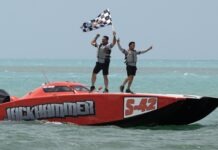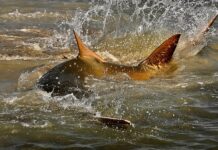
Monroe County has seen significant change over the last 200 years, and has been affected by a few wars. Maybe the first was the Seminole War which heated up and cooled off through several escalations over the course of decades.
The first escalation erupted before “La Florida” became an American territory. The last, the third escalation, occurred after Florida achieved statehood in 1845 and lasted from 1855-1858.
During the second escalation, hostilities erupted in the Florida Keys — including the southernmost attack at Indian Key on Aug. 7, 1840. The Seminole War was a seminal event in Monroe County history, as was the Civil War that pitted Southern sympathizers against Northern supporters. This was especially prevalent in Key West. While Florida was part of the Confederacy, Key West remained a Union stronghold.
This was due, in no small part, to the construction of Fort Zachary Taylor that began in 1845. Though not completed until 1866, the U.S. fortress remained under the command of Union soldiers throughout the war. Heavily armed with cannons equipped with a three-mile firing range, the fort played an important role during the war as it helped to stop Confederate ships running supplies between Gulf and Atlantic ports.
It was not the last war to leave its footprint on the island chain. Remember the Maine? When the U.S. battleship Maine blew up in Havana Harbor on Feb. 15, 1898, killing 266 men, it ignited the Spanish–American War. Injured and dead soldiers were brought to Key West, and some were buried in the Key West Cemetery, where a monument to the fallen was erected in 1898.
The two World Wars left different footprints on the island chain. When hundreds of World War I veterans were brought to the Keys to work on bridge projects for the Overseas Highway in 1934, more than 200 would become victims of the 1935 Labor Day Hurricane. To this day, it registers as the most powerful hurricane to strike North America. One of the unintended results of World War II was the arrival of the first freshwater pipeline to the Keys. The Florida Keys Aqueduct Commission was formed in 1937. When the U.S. Navy required more fresh water than it could manufacture at its base in Key West, it joined forces with the Florida Keys Aqueduct Commission to build a pipeline.
To reach Key West, 130 miles of 18-inch pipe was laid in trenches, underwater, or attached to automobile bridges that connected the islands to a wellfield on the mainland in a pine rockland forest west of Florida City. The Navy paid two-thirds of the extensive bill. When the project was completed, the first water to pour down the pipeline reached Key West on Sept. 22, 1942.
Another boon to the communities up and down the island chain was the arrival of electricity. Unlike the freshwater pipeline, electricity was generated in community pockets before spreading up and down the Keys. John Jay Philbrick established the Key West Electric Company circa 1889. It was the first of its kind in the Florida Keys. Competition arrived circa 1897 as an electric plant was developed by the William Curry’s Sons Company. In later years, Philbrick’s KWEC purchased the operation. As Key West grew, as well as the demand for service, so did the KWEC. In 1943, the KWEC was incorporated into the Key West utility City Electric.
It was not until the 1930s that electricity began to spread up the Keys. Tavernier’s H.S. “Mac” McKenzie worked with Florida Power and Lighting to build a small electric plant in the Upper Keys. Located behind the Tavernier Hotel, it was powered by a single 50-horsepower diesel generator. Electric lines stretched about a mile between Tavernier’s Coconut Row and the Driftwood Trailer Park. Service hours were limited to 5 to 10 a.m. and 5 to 10 p.m. On Saturday nights, the electricity was left running until midnight. McKenzie’s plant served some 37 customers.
Like McKenzie, Alonzo Cothron built a private electric plant. He served a small community on Upper Matecumbe Key and served about 22 customers. Like McKenzie, Cothron offered service for limited hours in the mornings and evenings.
The same story, more or less, repeated itself in Marathon, where Captain Bill Thompson, for example, operated a private electric plant to power his properties and likely a few neighbors.
President Franklin Roosevelt’s Rural Electrification Administration helped unify these private operations by offering federally funded loans to bring electricity to rural communities. A group of 300 members, or future customers, had to sign up to qualify for the funds. A $5 membership fee was required. Securing 300 members was no easy task. Marathon resident Allen Parrish purchased 20 memberships to reach the goal. On Jan. 22, 1940, the Secretary of State certified the Florida Keys Electric Cooperative Association Inc. The office address read: Marathon Grocery, Marathon, Florida.
The battle of the Conch Republic was the last war to leave a discernible footprint on Monroe County and the Florida Keys. It was Sunday, April 18, 1982, when the U.S. Border Patrol established a roadblock at the junction of U.S. 1 and Card Sound Road. Armed officers approached each vehicle exiting the Keys, asking for identification, and not just from the drivers. Leaving the Florida Keys had become tantamount to leaving Canada or Mexico.
It did not take long for the resulting snarl of traffic to stretch all the way to Key Largo, 18 miles away. The roadblock devastated the Keys’ economy. International media outlets began billing the quagmire as the world’s biggest parking lot. The resulting battle between local jurisdictions and federal agencies resulted in an uprising and the creation of the Conch Republic.
While this is the fourth and final column celebrating Monroe County’s 200th anniversary, this column has been celebrating local history for years. With no plans to stop, more amazing history will be shared right here next week.






















